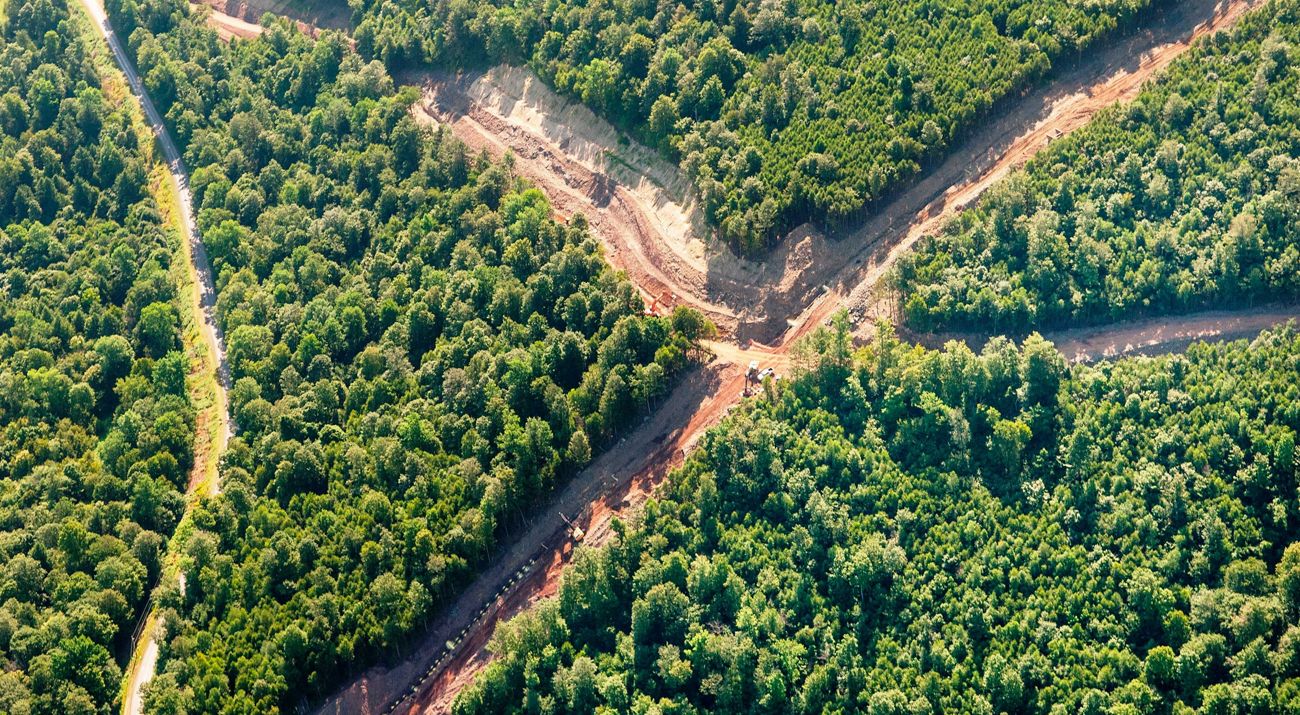Appalachian Energy Development
Working with partners to find intelligent solutions that meet society’s need for energy while keeping lands and waters healthy and productive.
The Nature Conservancy has summarized the potential ecological impacts of Appalachian shale energy development (based on research relevant to the region), has reviewed leading existing practices and is recommending science-based conservation practices. These practices aim to reduce risks from shale infrastructure and operations to the forests, freshwater systems and wildlife of the Appalachians and the benefits that these resources provide to residents and local economies.
Value of the Appalachians
The Appalachian region houses some of the world’s most diverse temperate forests and freshwater systems. These habitats supply numerous benefits—ranging from clean, reliable water supplies to outdoor recreation—to tens of millions of people every day.
At the same time, this region is a key source of domestic energy production due to the large oil and gas reserves found in Pennsylvania, West Virginia, Ohio and neighboring states. Developing these energy resources requires a vast network of infrastructure (e.g. well pads, pipelines, and roads) that is transforming the Appalachian landscape and resulting in measureable impacts to people, water, and wildlife.
The Science Behind our Work
The best available science is the foundation for the documents available here and the TNC’s recommended practices. Additional research in the Appalachian region is critical to better understand the interactions of species, communities, and ecological systems relative to shale energy development. View the scientific literature behind the TNC’s impact summaries and recommended practices, and browse additional resources to learn more about shale development.
Recommendations made by TNC may need to be adjusted to achieve site-specific objectives, to address public health and safety, to comply with regulatory requirements, to consider landowner preferences, operational costs, and technical feasibility, or to incorporate new information and technology. These documents do not address ecological risks associated with air quality; the transport, use, storage, or disposal of fracturing fluids; or subsurface risks.
Reducing Ecological Impacts of Shale Development
-
Summary of Recommended Practices
The Nature Conservancy has reviewed existing practices, and is recommending science-based solutions to avoiding and reducing risks from shale infrastructure and operations.
DOWNLOAD -
Landscape-Scale Planning
Infrastructure related to shale development is transforming the Appalachian landscape and adversely impacting wildlife habitat. Landscape-scale planning can reduce the footprint of well pads, pipelines and roads to help ensure that forest and freshwater systems can sustain people and wildlife.
DOWNLOAD -
Ecological Buffers
Disturbance from shale energy development activities can disrupt the behavior and reproduction of sensitive species and damage critical habitat areas. Keeping sufficient buffers between development sites and the streams, wetlands, and areas where animals breed or hibernate can help protect wildlife.
DOWNLOAD -
Roads
Roads account for a large part of the surface footprint of shale energy development and contribute to habitat fragmentation, pollution and erosion and sedimentation. Proper siting, design and maintenance of roads can reduce risks to freshwater resources and wildlife.
DOWNLOAD -
Stream Crossings
Road and pipeline stream-crossings can potentially impact brook trout in many ways, including blocking access to spawning habitat and altering stream conditions. Properly constructed, designed and maintained crossings can reduce disturbances and help brook trout and other wildlife thrive.
DOWNLOAD -
Water Withdrawals
Hydraulic fracturing places a high demand on surface water supply. If not properly managed, cumulative water demands pose a threat to water availability, water quality and stream habitat for more than one thousand species that rely on the region's unique riverine and wetland habitats.
DOWNLOAD -
Noise
Sounds of nature are important in wildlife communication and behavior. As shale energy production has increased, it has brought with it truck traffic, drilling and fracturing, and compressor stations, all making noises that can negatively impact surrounding wildlife and recreational activities.
DOWNLOAD -
Artificial Lighting
This region's vast stretches of interior forest have little artificial light, which is required at shale development sites for worker safety. This can interfere with the way animals navigate, forage for food and breed. Reducing the amount, intensity and timing of artificial light can reduce impacts.
DOWNLOAD -
Seasonal Timing
Activities associated with shale energy development—truck traffic, construction, drilling, fracturing—can disrupt wildlife behavior, reproduction and sensitive life stages such as juvenile development, breeding, migration and hibernation, highlighting the need to consider the timing of operations.
DOWNLOAD -
Scientific References
The Nature Conservancy developed a series of documents that describe the ecological impacts of shale oil and gas development and offer science-based recommended practices to reduce them. References are organized based on the order they appear in each document, not alphabetically.
DOWNLOAD -
Supporting Resources
Resources used to address ecological impacts of shale oil and gas development can be referenced for additional information, including lease guides for landowners, mapping and decision-support tools to use when siting infrastructure, and general information about shale oil and gas development.
DOWNLOAD
The Nature Conservancy gratefully acknowledges generous financial support from the Colcom Foundation and the Richard King Mellon Foundation to make this work possible. For more information, contact shale_practices@tnc.org.
